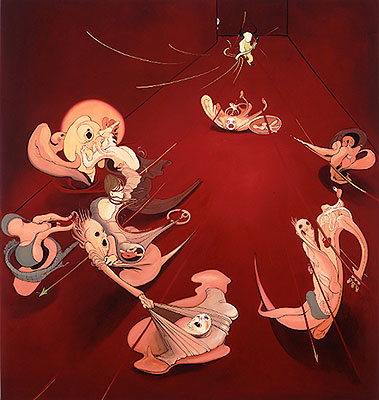“We are, as they were,” is the main point of Raphael’s entire painting. The School of Athens typified the entire idea of the Renaissance. The idea of “We are, as they were” symbolizes the meaning that one must know their past, before one can move forward into the present. Raphael perfectly exemplifies the Greek ideology of humanism, as well as many other fundamental ideas that emerged during this time period.This piece of art was not only a way of preserving the humanistic ideals, but also served as a protest to the church.
Speaking of a protest to the church, Apollo and Athena are painted in the back.The two of them were not gods the church recognized. Apollo is the god of the sun, beauty, athleticism, music, and harmony, and Athena is goddess of battle strategy, the arts, and wisdom,
There are many different famous historical figures that Raphael chose to represent as well-known people at the time. In the center of the fresco Plato (painted as Leonardo da Vinci) and Aristotle are depicted arguing over the idea of what is real. Plato is pointing upward, symbolic of his argument that the ideas of man are more real than Aristotle’s philosophy that the physical form is the most real representation of something. Herclitus always talked about how important it is for humans to experience strife and hardship, he is painted as Michelangelo for these reasons. Euclid, a mathematician in Ancient Greece, is portrayed as Bramante, the main architect of St. Peter’s Basilica. Raphael even put himself in his painting, to show that he too was a great.
The last important portion of this painting is the Humanistic roots and influences. Plato and Aristotle are the main inhibitors of this idea through their conflicting philosophies discerning form. Leonardo Da Vinci’s Vitruvian Man also showed this, with the square representing the ideas (Plato), and the circle representing the Earth (Aristotle). Ultimately this fresco serves as an immortalization of humanistic fundamentals and ideals.
This painting is truly amazing; Raphael perfectly captured the ideas of the Renaissance and it’s fundamentals, including many of it’s ancient Greek origins. He was able to represent the entirety of the time period through his piece, truly saying, “we are, as they were.”.
Speaking of a protest to the church, Apollo and Athena are painted in the back.The two of them were not gods the church recognized. Apollo is the god of the sun, beauty, athleticism, music, and harmony, and Athena is goddess of battle strategy, the arts, and wisdom,
There are many different famous historical figures that Raphael chose to represent as well-known people at the time. In the center of the fresco Plato (painted as Leonardo da Vinci) and Aristotle are depicted arguing over the idea of what is real. Plato is pointing upward, symbolic of his argument that the ideas of man are more real than Aristotle’s philosophy that the physical form is the most real representation of something. Herclitus always talked about how important it is for humans to experience strife and hardship, he is painted as Michelangelo for these reasons. Euclid, a mathematician in Ancient Greece, is portrayed as Bramante, the main architect of St. Peter’s Basilica. Raphael even put himself in his painting, to show that he too was a great.
The last important portion of this painting is the Humanistic roots and influences. Plato and Aristotle are the main inhibitors of this idea through their conflicting philosophies discerning form. Leonardo Da Vinci’s Vitruvian Man also showed this, with the square representing the ideas (Plato), and the circle representing the Earth (Aristotle). Ultimately this fresco serves as an immortalization of humanistic fundamentals and ideals.
This painting is truly amazing; Raphael perfectly captured the ideas of the Renaissance and it’s fundamentals, including many of it’s ancient Greek origins. He was able to represent the entirety of the time period through his piece, truly saying, “we are, as they were.”.



 RSS Feed
RSS Feed
